Table of Contents
Ever feel like your shoulders and back are just...there? Like they could be doing more? You're not alone. Many of us neglect these crucial areas, leading to imbalances and a lack of overall strength. But what if I told you there's a simple, effective way to change that? Enter the kettlebell. This isn't just some trendy fitness fad; it's a powerful tool for building a robust, functional physique. This article is your guide to mastering the kettlebell shoulder and back workout, designed to not only sculpt your muscles but also improve your overall mobility and stability. We'll explore the anatomy of your shoulders and back, understand why kettlebells are so effective, and then dive into specific exercises you can start incorporating today. We'll also cover crucial aspects like proper form, nutrition, and recovery. Whether you're a seasoned lifter or a complete newbie, this guide will equip you with everything you need to start your kettlebell journey. Get ready to unlock the power of the kettlebell and transform your upper body.
Understanding Shoulder and Back Anatomy for Kettlebell Training
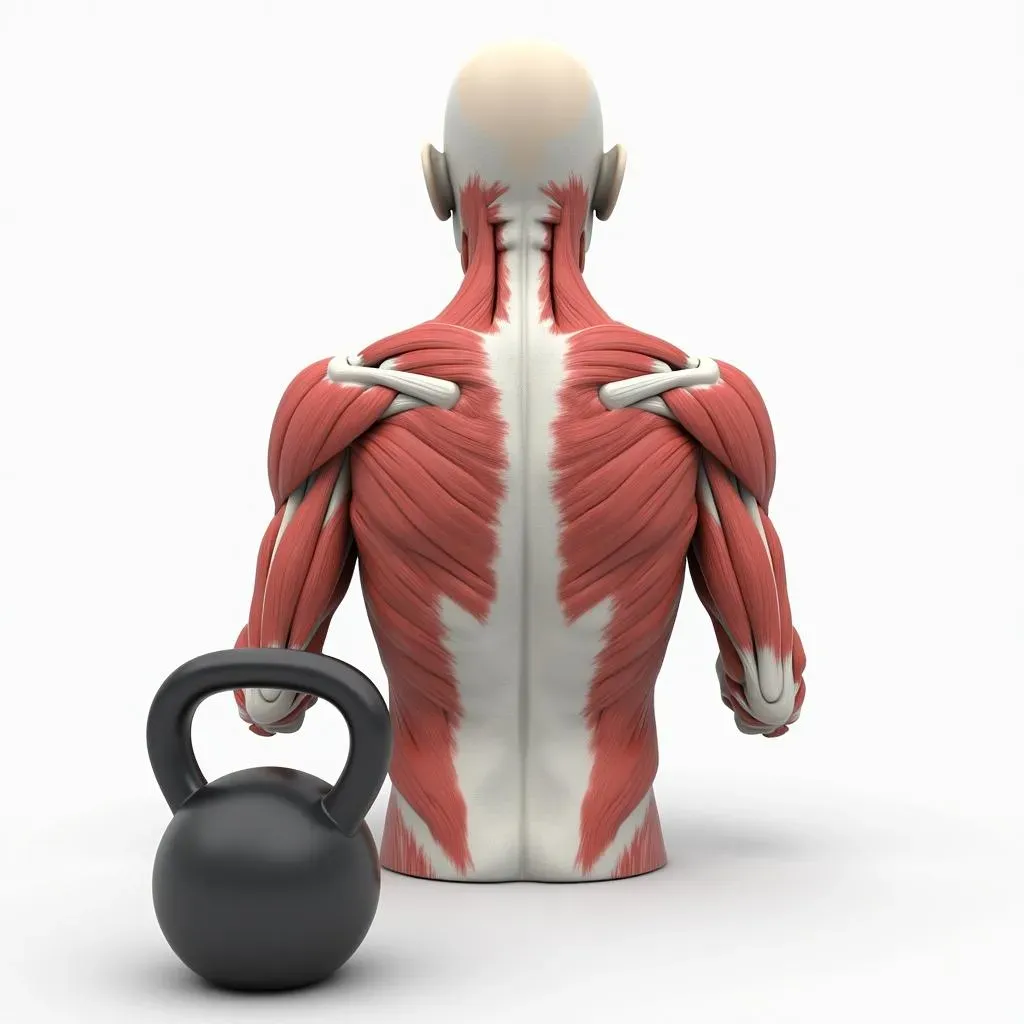
Understanding Shoulder and Back Anatomy for Kettlebell Training
The Shoulder Complex: More Than Just Delts
Okay, so when we talk about shoulders, most people immediately picture those big, round deltoids. But here's the thing: your shoulder is way more complex than that. It's a whole team of muscles working together. You've got your anterior deltoids (the front), the medial deltoids (the side), and posterior deltoids (the back). And then there's the rotator cuff – a group of four muscles that keep your shoulder joint stable and happy. These guys are super important for smooth, pain-free movement, and we can't forget them when swinging around kettlebells. Neglecting them is like building a house on a shaky foundation, it might look good for a bit, but it'll fall apart quickly.
Think of your shoulder joint like a golf ball sitting on a tee. It's got a ton of mobility, which is awesome, but it also means it's prone to injury if we don't respect its limits. That's where understanding the individual muscles comes in. Each one has a specific role, and we need to train them all, not just the showy ones. For instance, those rear delts? They're often overlooked but are key for good posture and shoulder health. Ignoring them is like only training the biceps and not the triceps, your arm will end up looking weird and unbalanced. Kettlebells are great for hitting these muscles from different angles, but only if you know what you're doing.
Muscle Group | Primary Function | Kettlebell Exercises |
|---|---|---|
Anterior Deltoids | Front shoulder movement, lifting forward. | Kettlebell Front Raise, Clean and Press |
Medial Deltoids | Side shoulder movement, lifting out to the side. | Kettlebell Lateral Raise, Upright Row |
Posterior Deltoids | Back shoulder movement, lifting backward, external rotation. | Kettlebell Reverse Fly, Bent-Over Row |
Rotator Cuff | Stabilizing the shoulder joint, rotation. | Kettlebell Arm Bar, Windmill |
The Back: A Chain of Strength
Now, let's talk about the back. It's not just one big slab of meat, it's a complex network of muscles that work together to support your spine and enable movement. We have the big guys, like the lats (latissimus dorsi), which give you that "V-shape," and the traps (trapezius), which run from your neck down to your mid-back. But then there are the smaller, often overlooked muscles like the rhomboids, which help pull your shoulder blades together, and the erector spinae, that run along your spine, keeping you upright. Each one plays a crucial role in how your back functions and how you perform with kettlebells.
Think of your back as a chain, with each muscle being a link. If one link is weak, the whole chain suffers. That's why it's so important to work all these muscles when we're training with kettlebells. Exercises like rows and swings are fantastic for hitting multiple back muscles simultaneously, but you need to be mindful of your form to avoid injury. Neglecting your back is like having a weak foundation for your entire body. It's not just about looking good; it's about having a strong, functional body that can handle whatever life throws at it. And trust me, a strong back makes everything, even carrying groceries, way easier.
- Latissimus Dorsi: Large, flat muscles that give you that "V-shape."
- Trapezius: Muscles that run from your neck down to your mid-back.
- Rhomboids: Muscles that pull your shoulder blades together.
- Erector Spinae: Muscles that run along your spine, keeping you upright.
The Benefits of Kettlebell Exercises for Shoulders and Back

The Benefits of Kettlebell Exercises for Shoulders and Back
Why Kettlebells are a Game Changer
Okay, so we've talked about the muscles, but why use kettlebells? Well, unlike dumbbells or barbells, kettlebells have an offset center of gravity. This forces your muscles, especially the ones in your shoulders and back, to work harder to control the weight. It's like trying to balance a wobbly tower versus a solid brick, the wobbly tower requires more effort, right? This constant stabilization is what makes kettlebell training so effective. It’s not just about lifting weight, it’s about controlling it, and that control translates to real-world strength and stability. Plus, kettlebells allow for more dynamic and functional movements, mimicking how your body actually moves in everyday life. Think about it, how often do you lift something in a perfectly straight line? Not often, that's for sure.
Another fantastic thing about kettlebells is their versatility. You can do a ton of exercises with just one piece of equipment, which is great if you don’t have a lot of space or money for a full gym setup. We're talking swings, cleans, presses, rows – the list goes on. These movements work multiple muscle groups at once, making your workouts super efficient. It's like hitting multiple birds with one stone, you're strengthening your shoulders, back, core, and even your legs all at the same time. This type of compound training not only builds strength but also improves your cardiovascular fitness and coordination. It's a full-body workout disguised as an upper-body focus, and that's why I'm so hyped about it.
Benefit | Description |
|---|---|
Improved Strength | Kettlebells build functional strength by engaging multiple muscle groups simultaneously. |
Enhanced Stability | The offset center of gravity challenges your stabilizer muscles, leading to better joint health. |
Increased Mobility | Dynamic kettlebell movements improve range of motion and flexibility. |
Time Efficiency | Full-body workouts in a single session, making your training more effective. |
Beyond the Aesthetics
It's easy to get caught up in wanting big muscles, but the benefits of kettlebell training for your shoulders and back go way beyond just looking good. Strong shoulders and back are crucial for good posture. They help to keep you upright and prevent that hunched-over look that we get from sitting at a desk all day. Think of it like having a built-in brace, holding you up and preventing pain. This improved posture can also reduce back pain and headaches. It's like giving your body a tune-up, fixing all the little aches and pains that come from poor posture and weak muscles. And let's be real, who doesn't want to stand a little taller and feel a little stronger?
And it is not just about avoiding pain, it’s about being able to do the things you love, without feeling limited by your body. Kettlebell training improves your functional strength. Meaning, you'll be better at everyday activities like carrying groceries, lifting kids, or even just reaching for that jar on the top shelf. It’s like upgrading your body's operating system, making everything run smoother and more efficiently. Plus, the improved stability and mobility you get from kettlebell training can also reduce your risk of injury, which is a huge win. It's not just about looking good, it's about feeling good and being able to live your life to the fullest.
- Improved Posture: Keeps you upright and prevents hunching.
- Reduced Pain: Alleviates back pain and headaches.
- Functional Strength: Makes everyday activities easier.
- Injury Prevention: Improves stability and mobility, reducing the risk of injury.
Essential Kettlebell Exercises for Shoulder and Back Strength
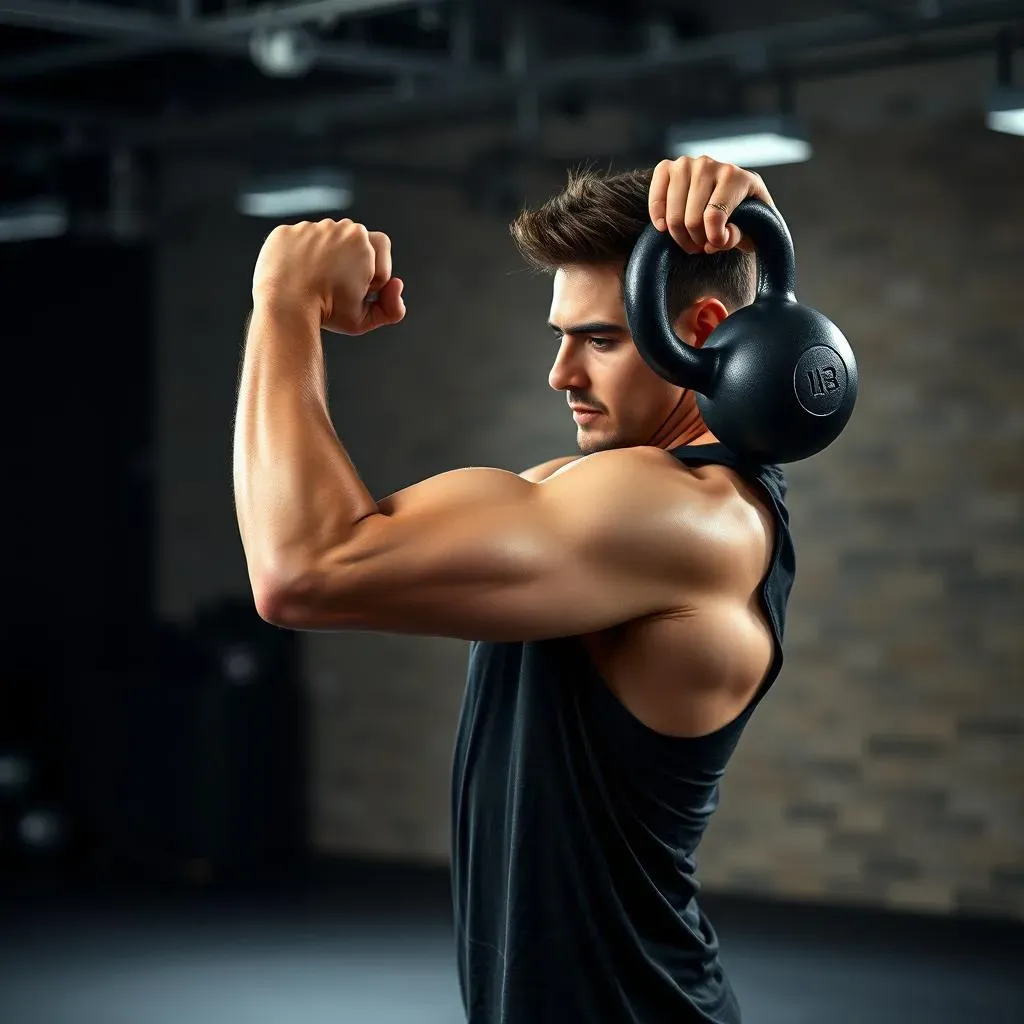
Essential Kettlebell Exercises for Shoulder and Back Strength
The Power of the Kettlebell Swing
Alright, let's get down to the nitty-gritty. If there's one exercise that's a must-do for your kettlebell shoulder and back workout, it's the swing. Now, I know what you might be thinking: "It's just a swing, how hard can it be?" But trust me, the kettlebell swing is a powerhouse move that engages your entire posterior chain—that’s the back of your body, from your neck all the way down to your heels. When done right, it's a fantastic way to strengthen your lower back, glutes, and hamstrings, which all contribute to your shoulder stability and power. The swing is like the foundation of a building, it’s not the flashiest part, but it's what everything else rests on.
The key to a good swing isn't just about lifting the kettlebell; it's about the hip hinge. Imagine you're closing a car door with your butt. That's the movement you want. Keep your back straight, engage your core, and drive through your hips. The kettlebell should feel like an extension of your arm, not something you're trying to muscle up. The power comes from your hips and legs, not your back or shoulders. If you're feeling it in your lower back, you're probably not hinging enough, and you're probably using your lower back to lift the weight, which is a big no-no. This move will not only improve your back strength but also your grip strength, and you'll feel it in your shoulders as well, as they work to stabilize the weight.
Exercise | Primary Muscles Worked | Why It's Essential |
|---|---|---|
Kettlebell Swing | Lower back, glutes, hamstrings, core, shoulders | Builds posterior chain strength, improves power and stability. |
The Shoulder Press: A Classic for a Reason
Next up, we have the kettlebell shoulder press. This is a classic for a reason—it directly targets those deltoids, especially the front and side heads, while also engaging your rotator cuff muscles. It's like giving your shoulders a focused workout, making them stronger and more resilient. When you press the kettlebell overhead, you’re not just building muscle, you’re also improving your shoulder joint stability. And let's be honest, who doesn't want strong, sculpted shoulders? This is where you get that defined look, which is cool, but the real win is the functional strength that comes with it. A strong shoulder press translates to better performance in all sorts of activities.
The key here is to maintain a stable base. Engage your core, keep your back straight, and press the kettlebell straight up, not forward. Avoid letting your wrist bend backward, that is a recipe for injury. A good tip is to imagine you're punching the ceiling. The kettlebell should move in a straight line, and your arm should be fully extended at the top of the movement. Don't rush it, control the movement on the way up and on the way down. This controlled movement will maximize muscle engagement and minimize the risk of injury. And remember, it's not about how much weight you lift, it's about how well you lift it. Focus on form, and the gains will follow.
- Engage Your Core: Keep your core tight to stabilize your spine.
- Controlled Movement: Lift and lower the kettlebell slowly and deliberately.
- Straight Line: The kettlebell should move in a straight line.
Crafting Your Kettlebell Shoulder and Back Workout

Crafting Your Kettlebell Shoulder and Back Workout
Putting It All Together: Your Workout Plan
Okay, so now you know the exercises, but how do you put them together into an actual workout? It's not as simple as just throwing a bunch of moves together and hoping for the best. A good workout plan should be structured to hit all the right muscle groups, allow for proper recovery, and progress over time. Think of it like building a house; you need a blueprint, not just a pile of bricks. For a solid kettlebell shoulder and back workout, you'll want to incorporate a mix of compound exercises (like swings and presses) and some isolation work (like rows and reverse flies) to target all those muscles we talked about earlier. Start with 2-3 days a week, allowing a day of rest in between, and then adjust as you get stronger.
When you're starting out, don't worry about lifting heavy. Focus on mastering the movement first. It's like learning to play an instrument; you wouldn't start with a complicated song, right? Begin with a lighter weight and focus on getting the form perfect. Once you're comfortable with the movement, you can gradually increase the weight. I like to think of it as a slow burn, not a sprint. And remember to listen to your body. If something doesn't feel right, stop and adjust. There's no point in pushing through pain, that's just going to set you back. This isn't about ego; it's about building a strong, healthy body. You should also think about your reps and sets. Start with 3 sets of 8-12 reps for each exercise, and then adjust the reps and sets as you progress.
Workout Component | Description |
|---|---|
Warm-up | Start with 5-10 minutes of light cardio and dynamic stretching. |
Compound Exercises | Include exercises like kettlebell swings and shoulder presses. |
Isolation Exercises | Add exercises like rows and reverse flies to target specific muscles. |
Cool-down | Finish with 5-10 minutes of static stretching. |
Sample Workout Routine
Alright, let's get practical. Here's a sample workout routine you can try. Remember, this is just a starting point, feel free to adjust it based on your fitness level and your goals. Begin with a dynamic warm-up, and then perform each exercise with good form and controlled movements. Don't rush it, focus on quality over quantity. And remember to rest between sets. It's not a race. It’s about building a strong body, not killing yourself. And finally, remember to cool down properly. It's just as important as the workout itself. Now, I'm not saying this is the only way to do it, but it's a solid place to start. And as you get more comfortable with the movements, you can start exploring different exercises and routines.
Start with a light weight, something you can handle comfortably for the prescribed number of reps. Then as you get stronger, you can gradually increase the weight. And remember to listen to your body. If you're feeling any pain, stop and adjust. It's not about how much you lift; it's about how well you lift. And most importantly, have fun. Working out shouldn't be a chore, it should be something you enjoy. This sample workout routine is a good start, but it's just the beginning. There's a whole world of kettlebell exercises out there, and I encourage you to explore them and find what works best for you.
- Warm-up: 5-10 minutes of light cardio and dynamic stretching.
- Kettlebell Swings: 3 sets of 10-15 reps.
- Kettlebell Shoulder Press: 3 sets of 8-12 reps per side.
- Kettlebell Rows: 3 sets of 8-12 reps per side.
- Kettlebell Reverse Fly: 3 sets of 10-15 reps.
- Cool-down: 5-10 minutes of static stretching.
Proper Form and Technique for Kettlebell Training
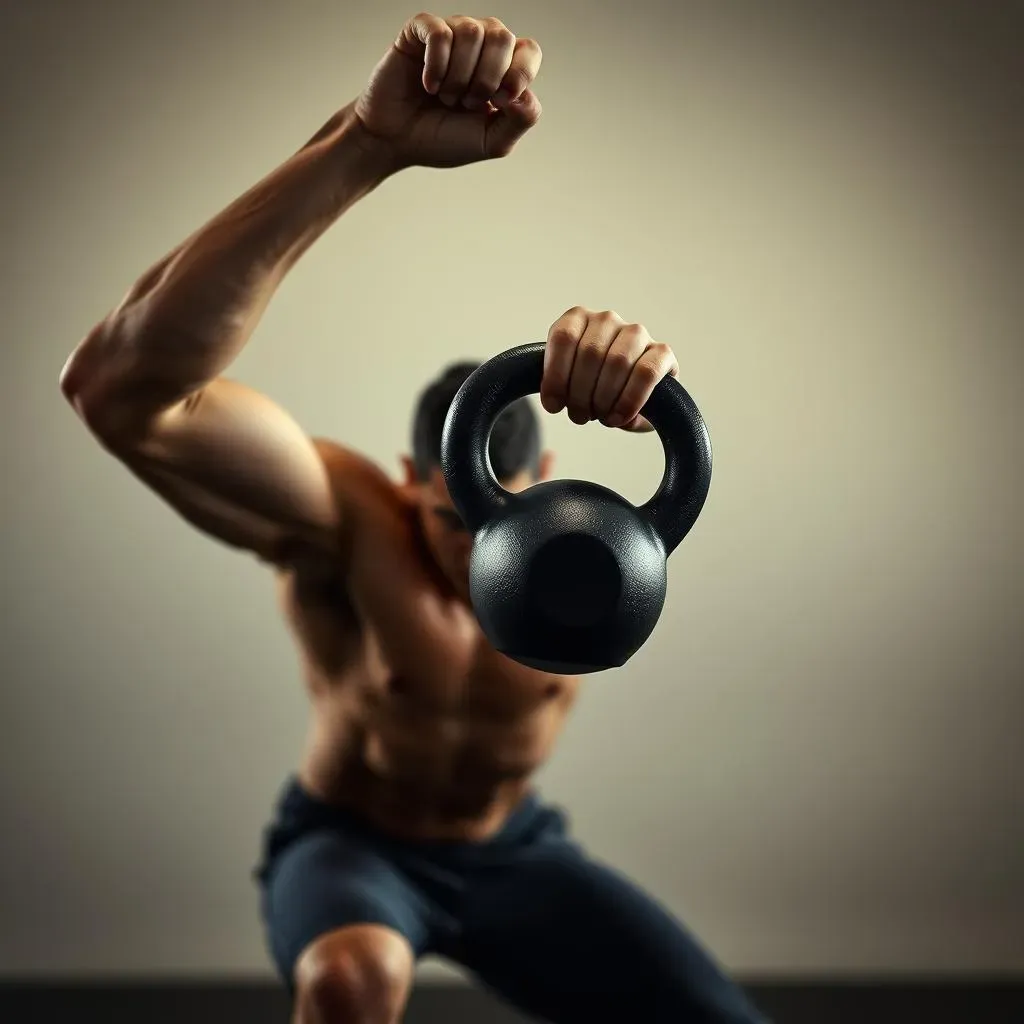
Proper Form and Technique for Kettlebell Training
The Foundation of Safe and Effective Training
Alright, let's talk about the nitty-gritty of kettlebell training: form. This is where a lot of people go wrong, and honestly, it's the most important aspect of any workout. You can have the best workout plan in the world, but if your form is trash, you're just asking for an injury. Think of it like this: you wouldn't drive a car without learning the rules of the road, would you? The same goes for kettlebell training. Proper form is your guide, ensuring you get the most out of your workout while staying safe. It's not about lifting heavy; it's about lifting right. And trust me, good form will get you way further in the long run than trying to show off with a weight you can't control. You need to be mindful of every movement, every rep, to reap the benefits and avoid the pitfalls.
The key to good form is to start slow and focus on the basics. Don’t rush into complex movements before you've mastered the fundamentals. For example, before you even think about doing a kettlebell swing, you need to understand the hip hinge. This is not a squat; it's a movement from your hips, like you're closing a car door with your butt. Keep your back straight, engage your core, and let your hips generate the power. And when you're doing a shoulder press, make sure you're not arching your back or letting your wrist bend backward. Control the weight, and don't let it control you. It’s like learning to ride a bike; you start slow, with training wheels, until you get the hang of it. And once you do, the sky is the limit. Remember, it is better to use a lighter weight and perfect form, than lift heavy with bad form.
Form Element | Description | Why It's Important |
|---|---|---|
Hip Hinge | Movement from the hips, not the lower back. | Prevents lower back injuries, generates power. |
Core Engagement | Keeping your core tight throughout the movement. | Stabilizes the spine, improves power. |
Neutral Spine | Maintaining a straight back, avoiding arching or rounding. | Prevents back injuries, ensures proper alignment. |
Controlled Movement | Lifting and lowering the kettlebell with control. | Maximizes muscle engagement, minimizes injury risk. |
The Importance of Gradual Progression
Now, let's talk about progression. It's tempting to jump in and try to lift the heaviest kettlebell you can find, but trust me, that's a recipe for disaster. You need to progress gradually, like climbing a staircase, one step at a time. Start with a lighter weight, something that feels comfortable, and focus on mastering the movement. Once you can perform the exercise with perfect form for the prescribed number of reps and sets, then you can think about increasing the weight. It's not about ego; it's about building a solid foundation. Think of it like building a house, you wouldn't start with the roof, would you? You start with the foundation, then the walls, then the roof. The same applies to your fitness journey, build the foundation first. And remember that you should be patient with yourself, it does take time to build strength.
And it is not just about the weight, it is also about the reps, sets, and the exercises themselves. Don't be afraid to start with the basics and gradually work your way up to more complex movements. For example, you might start with just the kettlebell swing, and then once you've mastered that, you can start incorporating other exercises, like the shoulder press and the rows. This is not a sprint, it's a marathon. And the key to success is consistency and patience. And most importantly, listen to your body. If you're feeling any pain, stop and adjust. There's no point in pushing through pain, that's just going to set you back. It's about building a strong, healthy body, not breaking it down. And always remember that rest is important, your body needs time to recover and rebuild the muscles.
- Start Light: Begin with a weight you can comfortably handle.
- Master the Movement: Focus on perfecting your form before increasing weight.
- Gradual Increase: Increase weight, reps, or sets over time.
- Listen to Your Body: Rest when needed, don't push through pain.
Nutrition and Recovery for Optimal Results

Nutrition and Recovery for Optimal Results
Fueling Your Body for Growth
Alright, so you're crushing it with your kettlebell workouts, but here's the thing: you can't build a skyscraper on a weak foundation. And your nutrition is that foundation. Think of food as the fuel for your muscles. You wouldn't put diesel in a gasoline car, would you? So, you need to make sure you're giving your body the right stuff to repair and rebuild those muscles you're working so hard. This isn't about starving yourself or going on some crazy diet, it's about eating smart and making sure you're getting the nutrients you need to optimize your gains. And trust me, what you put in your body is just as important as what you do with it.
First up, protein. This is the building block of muscle, so you need to make sure you're getting enough of it. Aim for around 0.8 to 1 gram of protein per pound of body weight. That might sound like a lot, but it's crucial for muscle repair and growth. And it's not just about protein. You also need carbs for energy and healthy fats for overall health and hormone production. Don't be afraid of carbs; they're your friend. They're what fuels your workouts. And healthy fats are essential for hormone production, which is vital for muscle growth and overall well-being. Think of your diet like a symphony; you need all the instruments to create a beautiful piece of music, not just the drums. And remember, consistency is key. It's not about being perfect, it's about making good choices most of the time.
Macronutrient | Role | Good Sources |
|---|---|---|
Protein | Muscle repair and growth | Chicken, fish, eggs, beans, lentils |
Carbohydrates | Energy for workouts | Whole grains, fruits, vegetables |
Healthy Fats | Hormone production, overall health | Avocados, nuts, seeds, olive oil |
The Importance of Rest and Recovery
Okay, so you're fueling your body like a machine, but here's the thing: even machines need to rest. And your body is no different. Recovery is just as important as the workout itself, and it's often the most overlooked aspect of any fitness program. Think of it like this: you wouldn't run a car engine non-stop, would you? You need to let it cool down, refuel, and get ready for the next drive. And your body is the same. It needs time to repair and rebuild those muscles, and it needs time to rest and recharge. This isn't about being lazy; it's about being smart. And honestly, if you're not recovering properly, you're just spinning your wheels.
Sleep is your best friend when it comes to recovery. Aim for 7-9 hours of quality sleep per night. This is when your body does most of its repair work. And it's not just about the quantity of sleep; it's about the quality of sleep. Avoid screens before bed, create a relaxing bedtime routine, and make sure your room is dark and cool. It's like giving your body a spa day, every single night. And it's not just sleep. Active recovery, like light walks or stretching, can also help reduce muscle soreness and improve blood flow. It's like giving your muscles a gentle massage, helping them to recover faster and more efficiently. And remember, listen to your body. If you're feeling tired, rest. There's no point in pushing yourself when you're exhausted. It's about working smarter, not harder.
Strategies for Effective Recovery
Now, let's talk about some practical strategies you can use to optimize your recovery. Foam rolling is a great way to release muscle tension and improve blood flow. It's like giving your muscles a deep tissue massage, helping to break up knots and adhesions. And it's not just for your legs; you can use a foam roller on your back and shoulders as well. Stretching is another crucial component of recovery. It helps to improve flexibility and range of motion, which is essential for preventing injuries and improving your overall performance. And it doesn't have to be some long, complicated routine; even a few minutes of stretching each day can make a big difference. It's like oiling a machine, keeping it running smoothly and efficiently.
And finally, hydration. Water is essential for all bodily functions, including muscle recovery. Make sure you're drinking enough water throughout the day, especially before, during, and after your workouts. And don't just wait until you're thirsty to drink; keep a water bottle with you and sip on it throughout the day. It's like giving your body a constant supply of fuel, keeping it running at its best. And remember, recovery is not a luxury; it's a necessity. It's just as important as the workout itself, and it's crucial for getting the results you want. It's like having a pit crew for your body, making sure everything is running smoothly and efficiently. And when you take care of your body, it will take care of you.
- Foam Rolling: Releases muscle tension and improves blood flow.
- Stretching: Enhances flexibility and range of motion.
- Hydration: Essential for all bodily functions, including muscle recovery.
RealLife Success Stories with Kettlebell Training

RealLife Success Stories with Kettlebell Training
From Desk Job to Kettlebell Warrior
Alright, let's get into some real-world inspiration. I'm not just making this stuff up, people are actually transforming their lives with kettlebell training. Take Sarah, for example. She was stuck in a desk job, dealing with constant back pain and feeling totally drained. She tried all sorts of things, but nothing really stuck. Then she stumbled upon kettlebells. At first, she was intimidated, but she started slow, focusing on mastering the swing and the press. Fast forward a few months, and she's not only pain-free but also feels stronger and more energized than ever before. It's like she unlocked a new level of herself, and she's not even close to stopping.
Sarah's story is a great example of how kettlebell training can be a game-changer. It's not just about lifting weights; it's about building a functional body that can handle the demands of everyday life. And the best part? She didn't need some fancy gym membership or expensive equipment. She just needed a kettlebell and the willingness to put in the work. Her transformation is a testament to the power of consistency and the effectiveness of kettlebell training. It's like she found a secret weapon to fight the "desk job blues," and now she's showing everyone how it's done. And you know what? You can do it too, it's about finding your motivation and committing to it.
Person | Challenge | Solution | Result |
|---|---|---|---|
Sarah | Desk job, back pain, low energy | Kettlebell training (swings, presses) | Pain-free, stronger, energized |
The Power of Kettlebells for Injury Recovery
Now, let's talk about Mark. He was a former athlete who had a nasty shoulder injury that seemed like it would never heal. He tried physical therapy, but the progress was slow and frustrating. Then, he started working with a trainer who introduced him to kettlebell exercises. Initially, he was hesitant, but he started with light weights and focused on controlled movements. Over time, he not only healed his shoulder but also regained his strength and mobility. It's like he found a way to rewire his body and come back stronger than before. And now he is back to his sport, and he is stronger than he was before.
Mark's story highlights how kettlebells can be used for rehabilitation and injury prevention. The controlled movements and emphasis on stability make them a great tool for strengthening and stabilizing the joints. And honestly, it's not just about recovering from injuries; it's about building a body that's more resistant to injuries in the first place. It's like giving your body a shield, protecting it from future setbacks. And the best part? Kettlebell training is not just for athletes, it's for everyone. It's about finding a way to move your body in a way that feels good and makes you stronger. It's about empowering you to take control of your own health and well-being.
- Controlled Movements: Ideal for rehabilitation and injury prevention.
- Joint Stability: Strengthens and stabilizes joints.
- Functional Strength: Improves overall body strength and resilience.
A Journey of Strength and Confidence
Finally, let's talk about Maria. She was always self-conscious about her body and never felt comfortable in her own skin. She started kettlebell training as a way to get in shape, but she found so much more than that. As she got stronger, she also got more confident. She started seeing her body as something powerful and capable, and she started to love the way she looked and felt. It's like she found a way to transform not just her body but also her mind. And she is now a kettlebell trainer, helping others to find their strength and confidence.
Maria's story is a great reminder that fitness is about so much more than just physical appearance. It's about building confidence, self-esteem, and a positive relationship with your body. And kettlebell training is a fantastic way to do that. It's like finding a way to unlock your inner warrior, and it's not just about lifting weights, it's about lifting yourself up. And trust me, when you feel strong and capable, you can accomplish anything. It's about finding your inner power and unleashing it to the world. And that's what I love about kettlebell training, it's a journey of strength and self-discovery.
Advanced Kettlebell Shoulder and Back Exercises
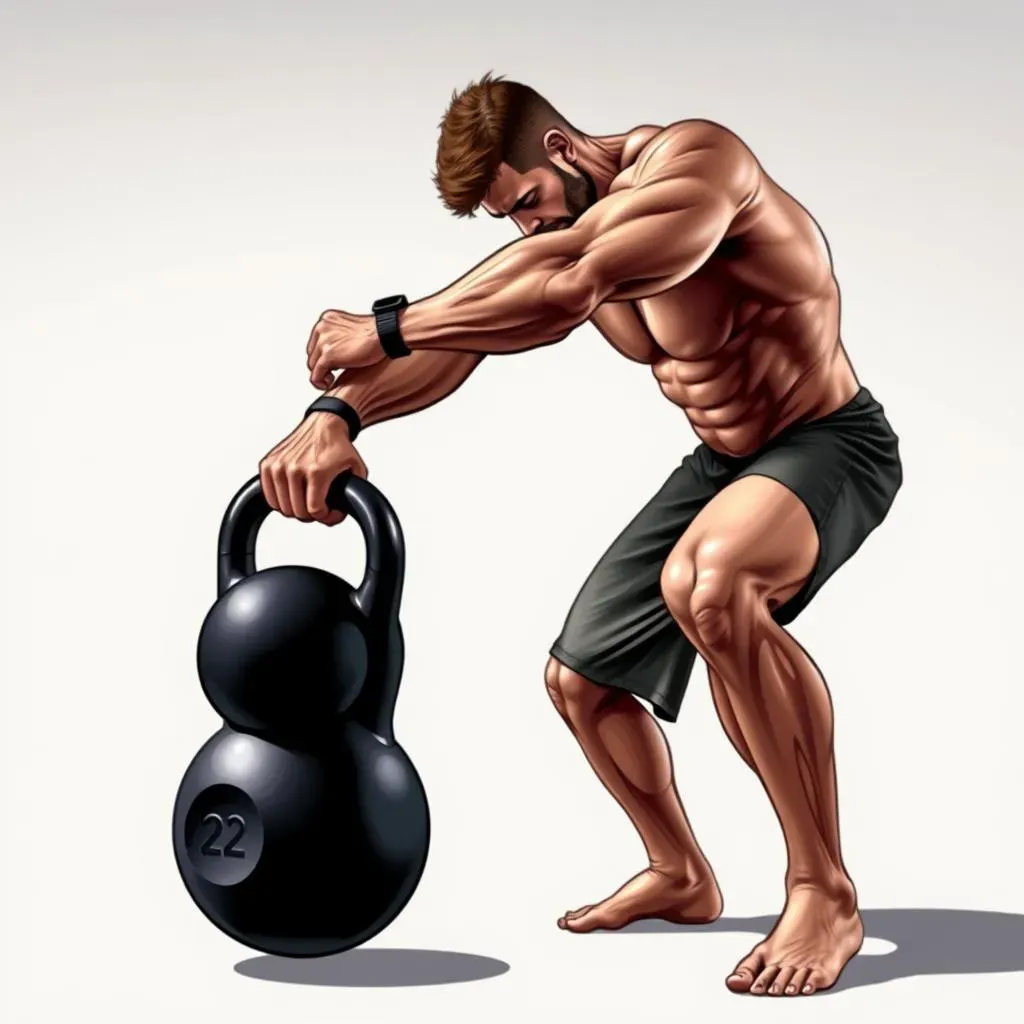
Advanced Kettlebell Shoulder and Back Exercises
Taking Your Training to the Next Level
Alright, so you've mastered the basics, you're swinging and pressing like a pro, and you're feeling stronger than ever. But what's next? Well, it's time to kick things up a notch and explore some advanced kettlebell shoulder and back exercises. This isn't about just adding more weight; it's about challenging your body in new ways, improving your coordination, and building even more functional strength. Think of it like leveling up in a video game; you've conquered the beginner levels, and now it's time to face the bigger challenges. These advanced exercises will test your limits, push your boundaries, and transform you into a true kettlebell warrior. And trust me, the feeling of mastering these complex movements is incredibly rewarding.
We're talking about exercises like the Turkish Get-Up, which is a full-body movement that tests your strength, stability, and coordination. Then there’s the Windmill, which challenges your core and shoulder stability while improving your flexibility. And we can't forget about the Snatch, a dynamic and powerful movement that requires speed, precision, and control. These aren’t your everyday exercises; they require a solid foundation and a good understanding of proper form, but the benefits are worth the effort. It's like learning a new language; it might seem daunting at first, but once you get the hang of it, a whole new world opens up to you. And the best part? These exercises will not only make you stronger but also more resilient and less prone to injuries.
Exercise | Focus | Benefits |
|---|---|---|
Turkish Get-Up | Full-body coordination, stability | Builds strength, improves mobility, enhances body awareness |
Kettlebell Windmill | Core and shoulder stability, flexibility | Strengthens core, improves shoulder mobility, enhances balance |
Kettlebell Snatch | Power, speed, control | Develops explosive power, improves cardiovascular fitness, enhances coordination |
Mastering the Turkish Get-Up
Let's start with the Turkish Get-Up, often called the "king" of kettlebell exercises. This move is like a full-body puzzle, challenging your strength, stability, and coordination. It's not just about lifting the weight; it's about moving through a series of positions with control and precision. It is a slow and deliberate movement, a dance between strength and flexibility. And it is not something you'll master overnight. It takes time, patience, and practice. But the feeling of finally nailing it is like no other. And it is not just about the exercise itself, it's about the mental focus and discipline that it requires. It's like meditating while moving, finding your center while pushing your limits.
The key to the Turkish Get-Up is to break it down into smaller steps. Start with the floor press, then move to the elbow, then to the hand, then to the half-kneeling position, then to the full standing position, and then reverse the movement. And you need to focus on each transition, making sure you're in control every step of the way. It's like climbing a mountain; you don't just jump to the top, you take it one step at a time. And remember, it's not about rushing through the movement; it's about executing each step with precision and control. It is a true test of your overall fitness, and it's a great way to assess your progress. And trust me, once you master the Turkish Get-Up, you'll feel like a true kettlebell master.
- Start Slow: Break the movement into smaller steps.
- Focus on Control: Maintain control throughout each transition.
- Be Patient: It takes time and practice to master the Turkish Get-Up.
Common Mistakes to Avoid in Kettlebell Training
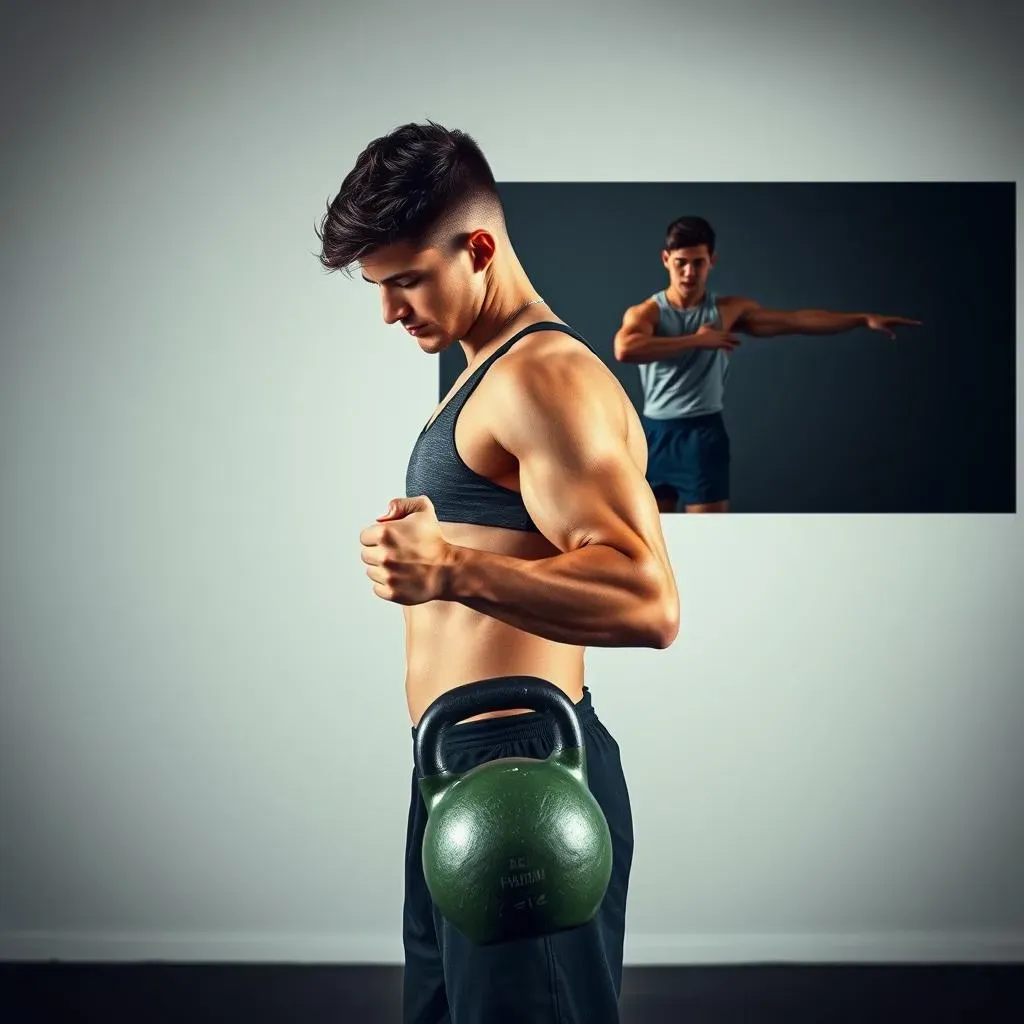
Common Mistakes to Avoid in Kettlebell Training
Rushing the Process:
Ignoring the Fundamentals
Okay, so you're pumped to start your kettlebell journey, that’s awesome! But hold your horses, it's not a race to the finish line. One of the biggest mistakes I see people make is rushing the process and skipping the fundamentals. It's like trying to build a skyscraper on a shaky foundation; it's not going to end well. Before you even think about swinging heavy weights or doing fancy exercises, you need to master the basics. We're talking about the hip hinge, proper core engagement, and maintaining a neutral spine. These are not just suggestions; they are the bedrock of safe and effective kettlebell training. Think of it like learning to play a musical instrument; you wouldn't start with a complex piece, you'd start with the basic scales. And you know what? It is totally ok to take your time to master the basics, it is not a race. This is about building a strong foundation, not about showing off.
And it's not just about learning the movements; it's about understanding them. Why are you doing this exercise? What muscles are you trying to engage? What is the proper form? It's about becoming a student of your body and understanding how it moves. And it's ok to ask for help, a trainer can help you to learn these movements. So, slow down, take your time, and focus on the fundamentals. It's not about how fast you can progress; it's about how well you can move. And trust me, when you build a solid foundation, you'll progress way faster in the long run. Rushing the process is like trying to build a house without blueprints, it's a recipe for disaster. And remember, patience is key, it takes time to learn these movements, so be patient with yourself.
Ego Lifting:
Sacrificing Form for Weight
Alright, now let's talk about ego lifting. This is the silent killer of any fitness journey, and it's especially dangerous with kettlebells. I get it, you want to lift heavy, you want to feel strong, and there's nothing wrong with that. But when you start sacrificing your form for the sake of lifting more weight, you're just asking for an injury. It's like trying to drive a race car without knowing how to steer; it might be fun for a bit, but eventually, you're going to crash. And when it comes to kettlebells, bad form can lead to serious shoulder, back, and knee problems. It's not worth it, trust me. Think of it like trying to impress someone with a bad joke, it’s just going to make you look silly and you’ll end up hurting yourself.
So, leave your ego at the door and focus on lifting with proper form. It's better to lift a lighter weight with good form than a heavy weight with bad form. And it's not just about avoiding injuries; it's also about maximizing your gains. When you lift with proper form, you're engaging the right muscles, building strength, and improving your overall performance. And you know what? It is perfectly ok to use a lighter weight, it does not mean you are weak. It means you are smart and you understand that form is the most important thing. And remember that progression is not always linear, there will be times when you can lift heavier and times when you need to use a lighter weight. And the most important thing is to listen to your body, it will tell you when you need to slow down. It's about building a strong and healthy body, not about trying to impress someone with your lifting skills.
Mistake | Consequence | Solution |
|---|---|---|
Rushing the process | Poor technique, increased risk of injury | Master the fundamentals, focus on form |
Ego lifting | Sacrificing form for weight, increased risk of injury | Prioritize proper form, lift with control |
Maintaining Consistency in Your Kettlebell Routine

Maintaining Consistency in Your Kettlebell Routine
Making it a Habit: The Key to Long-Term Success
Okay, so you've got the exercises down, you understand the importance of form, and you're even fueling your body like a pro. But here's the thing: all of that is useless if you're not consistent. Think of it like a garden; you can plant the seeds, but if you don't water them regularly, they're not going to grow. The same goes for your kettlebell routine. Consistency is the secret sauce, the magic ingredient that turns good intentions into real results. It's not about doing everything perfectly all the time; it's about showing up and putting in the work, even when you don't feel like it. And trust me, those small, consistent efforts add up to big changes over time. It's like compound interest for your body, the more you invest, the bigger the returns.
One of the best ways to maintain consistency is to make it a habit. And that means scheduling your workouts like you would schedule any other important appointment. Put them in your calendar, set reminders on your phone, and treat them like something you can't miss. It's like having a standing date with yourself, a promise to prioritize your health and well-being. And it's not just about the workouts themselves; it's also about creating a routine that supports your training. This could mean preparing your meals in advance, getting enough sleep, and having a designated time and place for your workouts. And remember, it's okay to start small. You don't have to workout every day for hours, start with 2-3 times a week and then adjust as you get stronger and more comfortable.
Tip | Description |
|---|---|
Schedule your workouts | Treat them like important appointments. |
Create a routine | Prepare meals, get enough sleep, have a workout space. |
Start small | Begin with 2-3 workouts per week, gradually increase. |
Finding Your Motivation and Staying Inspired
Now, let's be real, consistency is not always easy. Life happens, things get in the way, and sometimes you just don't feel like working out. That's where finding your motivation comes in. Why did you start this journey in the first place? What are your goals? Are you trying to get stronger? Feel better? Or just look good? Whatever your motivation is, keep it in mind when those tough days come. It's like having a compass, guiding you through the rough patches. And it's not just about your long-term goals; it's also about celebrating your small wins along the way. Did you add an extra rep? Did you lift a heavier weight? Did you just show up even when you didn't feel like it? Acknowledge those small victories, they're just as important as the big ones.
And it's not just about staying motivated; it's also about finding ways to keep your workouts interesting and engaging. Don't be afraid to try new exercises, explore different routines, and find what works best for you. It's like having a playground for your body, a place to experiment and have fun. And you know what? It is okay to change your routine, it does not mean you are quitting, it means you are evolving. And it's also important to find a community of like-minded people who can support and inspire you. Whether it's a fitness group, a workout buddy, or just an online community, having people who understand what you're going through can make a huge difference. It's like having a team, cheering you on and keeping you accountable. And remember, it is a journey, not a destination, so enjoy the process.
- Set clear goals: Know why you're doing this.
- Celebrate small wins: Acknowledge your progress.
- Keep it interesting: Try new exercises and routines.
- Find a community: Connect with like-minded people.
Dealing with Setbacks and Staying on Track
Let's face it, setbacks are a part of any journey, and kettlebell training is no exception. There will be days when you miss a workout, days when you eat something you shouldn't, and days when you just feel like giving up. And you know what? That's ok. It's not about being perfect; it's about being resilient. What matters is how you respond to those setbacks. Don't beat yourself up about it, don't let it derail your progress. Instead, acknowledge it, learn from it, and get back on track. It's like having a flat tire on a road trip; you don't just abandon the car, you change the tire and keep going. And remember that it's not about how many times you fall down; it's about how many times you get back up.
And it is also important to be flexible with your routine. Life is not always predictable, and sometimes things come up. So, if you miss a workout, don't sweat it. Just get back to it the next day. And if you're feeling tired or sore, don't push yourself too hard. It's better to take a rest day than to risk an injury. It's like having a map, it will guide you, but you will need to adjust your course along the way. And remember that it is ok to ask for help, a trainer or a friend can help you to stay on track. And the most important thing is to be kind to yourself. You're doing great, just keep going. It's not about perfection; it's about progress.
Wrapping Up Your Kettlebell Shoulder and Back Journey
So, we’ve explored the world of kettlebell shoulder and back workouts. It's clear this isn't just about lifting heavy things. It's about understanding your body, respecting its limits, and pushing it to become stronger and more resilient. Remember, consistency is key; those sculpted shoulders and that powerful back won't appear overnight. Embrace the process, stay patient, and focus on proper form. Don't be afraid to adjust the exercises to fit your body's needs. Whether you are a beginner or an experienced lifter, the kettlebell offers a versatile and effective path to a more balanced and functional physique. Now, go out there and swing, press, and get up – you've got this!